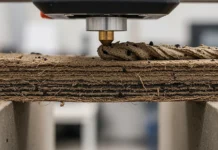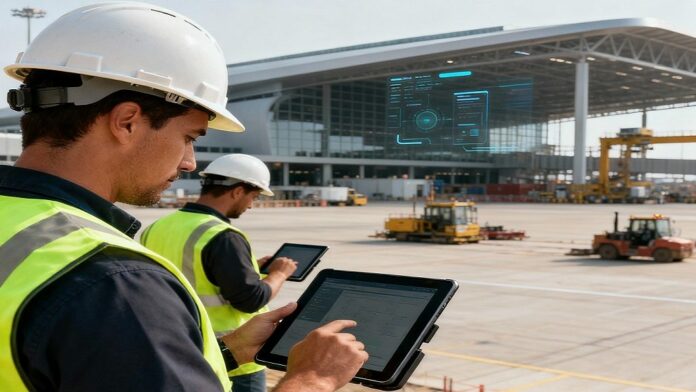Bridging the Technology Gap in Terminal Construction Projects
Terminal construction projects represent some of the most complex undertakings in modern infrastructure development, where the convergence of multiple systems, stakeholder requirements, and operational constraints creates unique challenges for technology adoption. As the construction industry undergoes digital transformation, technology adoption in terminal construction has emerged as a critical success factor that determines project outcomes, operational efficiency, and long-term competitiveness.
The technology gap in terminal construction manifests across multiple dimensions, from basic digital literacy among workforce personnel to sophisticated integration challenges between advanced systems. This gap significantly impacts project delivery timelines, cost management, and quality outcomes, making it imperative for construction teams to develop comprehensive strategies that address both immediate implementation challenges and long-term capability development.
Contemporary terminal construction projects demand unprecedented levels of coordination, precision, and efficiency that traditional construction methods cannot adequately address. The scale and complexity of modern terminals, combined with operational continuity requirements and stringent safety standards, necessitate technology solutions that enhance communication, streamline processes, and provide real-time visibility into project progress.
Understanding the Digital Divide in Terminal Construction
The technology gap in terminal construction stems from several interconnected factors that compound the challenges of implementing advanced digital tools and processes. Legacy mindsets within the construction industry often resist technological change, preferring familiar methods and established workflows over innovative approaches that require new skills and processes.
Workforce readiness represents a fundamental challenge, as many construction professionals lack the digital skills necessary to effectively utilize advanced technologies. This skills gap affects everything from basic computer literacy to sophisticated data analysis capabilities, creating barriers to technology adoption that extend beyond simple tool implementation.
Financial constraints also contribute to the technology gap, as construction companies must balance immediate project needs with investments in technology infrastructure, training programs, and ongoing support systems. The return on investment for technology initiatives may not be immediately apparent, making it difficult to justify expenditures in competitive bidding environments.
Organizational Resistance and Change Management
Cultural resistance within construction organizations often impedes technology adoption, as established workflows and proven methodologies create comfort zones that discourage experimentation with new approaches. Project teams may view technology initiatives as additional overhead rather than productivity enhancers, particularly when implementation requires significant time investments during critical project phases.
Change management challenges are amplified in terminal construction projects, where multiple organizations, contractors, and stakeholders must coordinate their technology adoption efforts. Inconsistent technology standards, incompatible systems, and varying levels of digital maturity across project participants create integration challenges that can undermine the effectiveness of individual technology initiatives.
Strategic Framework for Technology Integration
Successful technology adoption in terminal construction requires comprehensive strategic frameworks that address technical, organizational, and human factors simultaneously. Organizations must develop clear technology roadmaps that align with project objectives, stakeholder requirements, and long-term business goals while maintaining flexibility to adapt to evolving needs and emerging opportunities.
The strategic framework should prioritize technologies that provide immediate value while building capabilities for more advanced applications. This approach enables organizations to demonstrate success, build confidence, and justify continued investments in technology initiatives. Priority should be given to technologies that enhance communication, improve data visibility, and streamline collaboration between project participants.
Integration planning represents a critical component of successful technology adoption, as terminal construction projects involve numerous specialized systems that must work together effectively. The framework should address data standards, communication protocols, and interoperability requirements that enable seamless information flow between different technology platforms.
Phased Implementation Approach
Technology adoption in terminal construction benefits from phased implementation strategies that allow teams to develop expertise gradually while managing risk and resource requirements. Initial phases should focus on foundational technologies that provide broad benefits and establish data management capabilities that support more advanced applications.
Early phases might include basic project management platforms, document management systems, and communication tools that enhance collaboration between project participants. These technologies provide immediate value while establishing data collection and sharing practices that support subsequent technology initiatives.
Advanced phases can incorporate more sophisticated technologies such as AI-powered analytics, automated monitoring systems, and predictive maintenance platforms. This gradual progression allows teams to build expertise and confidence while managing the complexity associated with more advanced technology implementations.
Artificial Intelligence and Machine Learning Applications
AI in construction has emerged as a transformative force in terminal projects, offering capabilities that address some of the most persistent challenges in complex infrastructure development. Machine learning algorithms can analyze vast datasets to identify patterns, predict outcomes, and recommend optimizations that improve project performance and reduce risk.
Predictive analytics applications enable construction teams to anticipate potential issues before they impact project schedules or budgets. By analyzing historical project data, current progress indicators, and external factors, AI systems can identify early warning signs of delays, cost overruns, or quality issues, enabling proactive interventions that minimize negative impacts.
Quality control applications leverage computer vision and machine learning to automate inspection processes and identify defects or deviations from specifications. These systems can process images and sensor data to detect issues that might be missed by manual inspection processes, improving overall project quality while reducing inspection time and costs.
Intelligent Resource Optimization
AI applications in terminal construction extend to resource optimization, where machine learning algorithms analyze equipment utilization, workforce productivity, and material consumption patterns to recommend improvements that enhance efficiency and reduce waste. These systems can optimize equipment scheduling, crew assignments, and material deliveries to minimize idle time and improve overall project productivity.
Scheduling optimization represents another significant application area, where AI systems can analyze complex project dependencies, resource constraints, and external factors to develop optimized construction sequences that minimize duration and reduce risk. These systems can continuously update schedules based on actual progress and changing conditions, maintaining accuracy and relevance throughout project execution.
Automation Technology Integration
Automation technology encompasses a broad range of applications that can significantly enhance terminal construction efficiency and quality. Robotic systems are increasingly being deployed for repetitive tasks such as material handling, welding, and inspection activities, reducing labor requirements while improving consistency and quality.
Automated data collection systems eliminate manual data entry and reduce errors while providing real-time visibility into project conditions. Sensors, cameras, and IoT devices can continuously monitor construction progress, environmental conditions, and equipment performance, feeding data into management systems that enable informed decision-making.
Digital construction tools automate various aspects of the construction process, from quantity takeoffs and cost estimation to progress tracking and quality control. These tools reduce manual effort while improving accuracy and providing audit trails that support project documentation and compliance requirements.
Smart Equipment and Connectivity
Connected equipment systems enable real-time monitoring of construction machinery, providing insights into utilization rates, maintenance needs, and operational efficiency. These systems can predict equipment failures, optimize maintenance schedules, and improve overall fleet management while reducing downtime and maintenance costs.
Telematics systems provide valuable data on equipment location, usage patterns, and performance metrics that enable construction managers to optimize resource allocation and identify opportunities for improvement. This data can also support safety initiatives by monitoring operator behavior and identifying potential hazards before they result in incidents.
Digital Tools and Platform Integration
Modern terminal construction projects benefit significantly from integrated digital platforms that provide centralized access to project information, tools, and communication channels. These platforms eliminate information silos and ensure that all project participants have access to current, accurate data that supports informed decision-making.
Cloud-based collaboration platforms enable real-time sharing of drawings, specifications, and project updates between geographically distributed team members. These platforms maintain version control, provide audit trails, and ensure that all stakeholders are working with the most current information available.
Mobile applications extend digital platform capabilities to field personnel, providing access to project information, communication tools, and data collection capabilities from any location. These applications can operate offline when necessary and synchronize data when connectivity is restored, ensuring continuous access to critical project information.
Building Information Modeling Integration
BIM platforms serve as the foundation for many digital construction initiatives, providing detailed three-dimensional models that support visualization, coordination, and analysis throughout the project lifecycle. BIM integration with other digital tools creates powerful synergies that enhance project management capabilities.
The integration of BIM with project management systems enables automated progress tracking, where actual construction activities are compared against planned schedules and deviations are automatically identified. This integration provides real-time visibility into project status and enables proactive management of potential issues.
Workforce Development and Training Programs
Successful technology adoption in terminal construction requires comprehensive workforce development programs that address both technical skills and change management aspects of digital transformation. Training programs must be tailored to different roles and skill levels, ensuring that all team members can effectively utilize new technologies and processes.
Basic digital literacy training provides foundational skills that enable construction workers to use mobile devices, access cloud-based platforms, and navigate digital interfaces effectively. This training should be practical and job-focused, demonstrating how technology tools directly support daily work activities.
Advanced training programs should address specialized technologies such as BIM software, data analytics platforms, and automated equipment operation. These programs require more intensive instruction and may benefit from partnerships with technology vendors or educational institutions that can provide specialized expertise.
Continuous Learning and Adaptation
Technology adoption in terminal construction is an ongoing process that requires continuous learning and adaptation as new technologies emerge and existing systems evolve. Organizations must establish learning cultures that encourage experimentation, knowledge sharing, and continuous improvement in technology utilization.
Mentorship programs can accelerate technology adoption by pairing experienced digital practitioners with team members who are developing their technology skills. These programs provide personalized support and practical guidance that complements formal training initiatives.
Measuring Success and Continuous Improvement
Effective technology adoption in terminal construction requires robust measurement systems that track progress, identify challenges, and demonstrate value to stakeholders. Key performance indicators should address both immediate project impacts and long-term capability development outcomes.
Productivity metrics can demonstrate the efficiency gains achieved through technology adoption, while quality indicators show improvements in construction accuracy and defect reduction. Cost metrics should account for both direct technology costs and indirect benefits such as reduced rework, improved scheduling accuracy, and enhanced safety performance.
User adoption metrics provide insights into how effectively technology tools are being utilized and where additional training or support may be needed. These metrics can guide refinement of training programs and identify opportunities for process improvements that enhance technology effectiveness.
Return on Investment Analysis
Comprehensive ROI analysis should consider both tangible and intangible benefits of technology adoption, including productivity improvements, quality enhancements, risk reduction, and competitive advantages. This analysis provides the business case for continued technology investments and guides strategic decision-making regarding future technology initiatives.
Long-term value creation through technology adoption extends beyond individual project benefits to include organizational capability development, competitive positioning, and preparation for future market opportunities. Organizations that successfully bridge the technology gap in terminal construction position themselves for sustained success in an increasingly digital construction environment.
The journey toward comprehensive technology adoption in terminal construction requires sustained commitment, strategic planning, and continuous adaptation to emerging opportunities and challenges. Organizations that embrace this transformation will find themselves better equipped to deliver complex terminal projects efficiently, safely, and profitably while building capabilities that support long-term competitive success.































